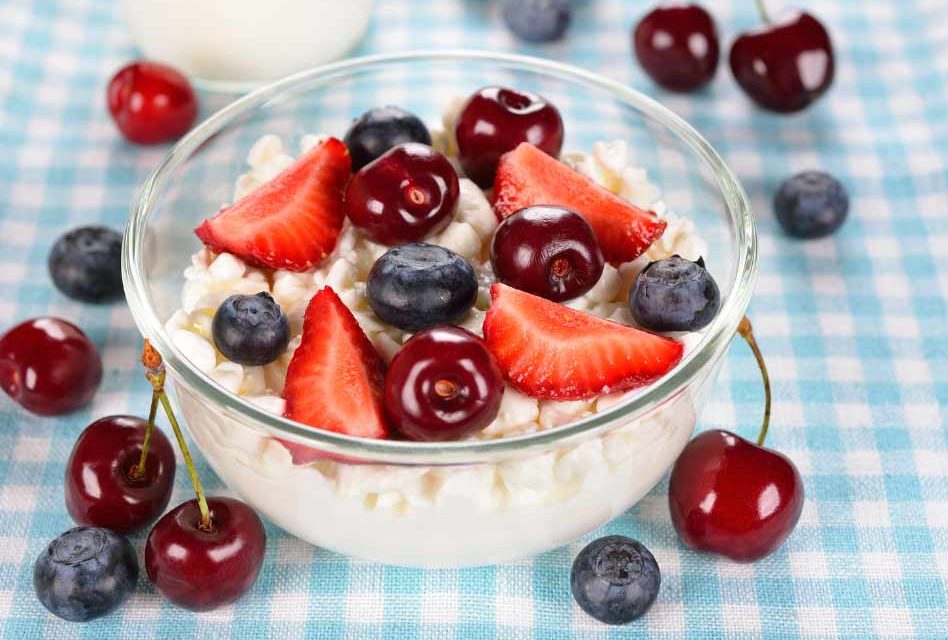Shannon O’Meara, MS, RD
Orlando Health: Nutrition
More than 550 million views on TikTok can’t be wrong: Cottage cheese is hot. Blended into ice cream or bread dough or straight off the spoon, it’s fun to watch Gen Z discover the creamy goodness your grandmother loved.
But cottage cheese goes back further than that — curdled-milk cheese is mentioned in Homer’s Odyssey, and there’s evidence of its existence in the Middle East as early as 5,000 B.C. So why the hullabaloo now?
Some put it down to Americans’ insatiable taste for soft and creamy comfort foods. But cottage cheese has survived the eons for a good reason: It’s packed with protein. One cup can contain as much as 25 grams, the equivalent of a double cheeseburger. But as with that burger, there can be other things to be aware of, like the amount of salt and added sugar.
Start Small
Gaze on your grocer’s cottage cheese section and you will be amazed: 4%, 2%, whole milk, classic, large curd, small curd, low-fat, even lactose-friendly. Want fruit with that? You can get it with strawberries, pineapple, peach or blueberries. (But don’t — more about that in a sec.)
If you’ve never tried cottage cheese, start with small curd. The size refers only to the curd — clumped milk proteins — and affects the mouth feel. Small curd can seem creamier; large curd is more chewy. Nutritionally they are the same. The percentages refer to the amount of milk fat; choose the lower number. (If you’re never had cottage cheese, might as well start with the most healthful version — you might love it!)
Salt, Fat and Sugar
Salt is what gives cottage cheese its flavor. But some brands can contain a surprising amount. There are low-sodium varieties. If your grocer doesn’t carry them, choose the lowest-sodium brand you can based on the nutritional labeling, or limit your serving sizes. (There are recipes online for making your own cottage cheese but they’re pretty labor-intensive, like this amusing 11-page instructional pamphlet released by the USDA in the 1970s.)
If you want yours with fruit, buy plain cottage cheese and add your own — fruit in pre-packaged versions is preserved in added sugar. You can get that same consistency at home with fresh fruit and a little honey. Buying plain also means you can try out more of those TikTok recipes.
A great pro tip for understanding the “daily value” percentages on nutritional labels: A nutrient labeled as 5 percent of your daily value or less is considered low; 20 percent or more is high. So cottage cheese that includes 20 percent of your daily value of salt is a high-sodium product. According to FDA rules, if cottage cheese or other foodstuff is labeled “low-fat,” for example, it means that it contains 5 percent or less of your overall recommended daily dose of fat.
What Else Is in Here?
One new addition that helps to account for the craze — along with savvy social-media marketing — is “live and active cultures,” familiar in yogurt and kefir. Adding them makes the cottage cheese a probiotic, which promotes gut health (and is cheaper than supplements). Some cottage cheese also has prebiotic fibers added that fuel good gut bacteria. Inulin is a type of soluble fiber that provides moisture and a creamy texture. Most other ingredients common in cottage cheese — like gums or starches — are additives that preserve look, feel and taste and are not nutritionally relevant.
Protein Wonder Twins
Nutritionally, there’s not much difference between plain, zero-fat Greek yogurt and plain 2% cottage cheese, other than the sodium in many cottage cheeses. Both are excellent sources of protein, and affordable compared to eggs or meat. Each of them can substitute for higher-fat foods like mayo or sour cream in dips, casseroles or lasagna, and will keep you full for longer than, say, ricotta cheese. Lasagna can be a good recipe to experiment with swapping in cottage cheese because ground beef (or whatever protein you choose) typically has a small-curd texture, so you won’t notice the cottage cheese, which is not aged or ripened and does not melt.
Now It’s Your Turn
Now that you know what to look for, join the kids and try this recipe for Cottage Cheese Ranch Dip.
- 1 cup low-fat cottage cheese
- ½ tsp dill
- ¼ tsp onion powder
- ¼ tsp garlic powder
- ½ tsp chives
- ½ tsp parsley
- 1/8 tsp black pepper
Combine all ingredients in a food processor and pulse about 30 seconds. (You can also use a food processor, or mix with a spoon.) Keep refrigerated until ready to serve with cut-up vegetables or whole-wheat pita bread.


















